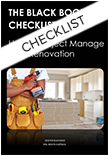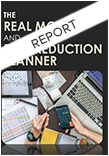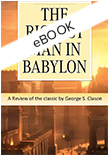Real Wealth Australia
A Definitive Guide On Negative Gearing (with Examples)
Developing an investing strategy that suits your circumstances is a major step forward in your investing journey but it is not the total equation. Your action plan, which includes a buying strategy that best suits your situation, is the next piece in the puzzle.
When you buy an investment property, there are several ownership costs you need to take into consideration. As well as the mortgage repayments – which are usually the largest expense in owning an investment property – you’ll also need to consider expenses such as council rates, water rates, property management expenses, maintenance, insurance and possibly body corporate fees.
Fortunately, you will have a regular income stream from the property in the form of rent to help you cover these expenses. A negative difference between the rent that you receive and the cost of owning the property is often referred to as your “shortfall”.
Depending on the property you buy, the shortfall might cost you a little or a lot each week, or it may even put money back in your pocket each week.
Negatively Geared Property
Negatively geared property is one in which the incurred costs of owning the property are greater than the rental income, even after tax benefits are taken into consideration. This means that you will have to dip into your income each week in order to support this type of property.
You might rightly ask, why buy such a property? The reason is that this type of property generally exhibits higher than normal capital growth, which is what investor’s should primarily aim for. You should however take into consideration the impact of owning a property like this and the impact it will have on your lifestyle and borrowing capacity.
Example: Let’s say you buy a new property in Brisbane for $450,000, and your weekly property expenses including the mortgage, rates, insurance and property management fees comes to $575. Let’s also assume that the rent is $500 per week. This means that that your property will be negatively cash flowed to the tune of $75 per week. If the depreciation deduction amounts to $60 per week then you would effectively be out of pocket by between $20 and $45 per week.
The government likes to encourage people to invest in property – after all, private landlords provide rental accommodation for millions of Australians who cannot afford their own accommodation, and without investors, the government would be forced to provide alternative social housing solutions which it patently cannot afford to do.
For this reason, the tax man is willing to cut you a break come tax time, and allow you to claim depreciation and offset any property losses against your personal taxable income.
If your negatively geared property is costing you $45 per week, it equates to $2,340 per year that you can claim against your taxable income at tax time. If your nominal tax rate is 30%, that’ll be around $702 back in your pocket at the end of the financial year – so in effect, the property will only cost you around $1638 per year, or $31.50 per week.
Positively Geared Property
A positively geared investment property is one in which the investment property produces more income than it costs to run and in order to achieve this tax benefits are taken into consideration.
Negative Gearing Examples: Let’s say you buy another house in regional Queensland for $275,000, but this time let’s assume that it is brand new. and that the property’s weekly expenses including the mortgage, rates, insurance and property management fees come to $380 per week. Let’s further assume that the rent is $360 per week and that you’ve had at depreciation schedule produced by the quantity surveyor which allows you to depreciate the property at a rate of $70 per week.
At the end of the financial year, the taxman views your property as costing you $450 per week ($380 real costs plus $70 depreciation). This leaves a technical shortfall between rental income and expenses of $90 per week. The ATO will permit you to claim this $90 shortfall as a deductible expense on your taxable income and depending on what your tax rate is, you will receive between 15-40% of that shortfall back at tax time. Your investment will therefore have become a positively geared property that returns $13-$36 per week. This example is specific to negative gearing Australia.
Positive cash flow property
Positive cash flow from a property is achieved when your rental income exceeds all of the expenses associated with that property. This is without tax benefits being taken into consideration. Another way of saying this is, there is enough rent money left over after expenses for you to spend and/or reinvest. Property that delivers a positive cash flow most commonly occurs in regional areas where property prices are low, but rental demand is strong.
Example: Let’s say you buy an older house in regional Queensland for $200,000, and your weekly expenses including the mortgage, rates, insurance and property management fees come to $280 per week. Let’s also assume that the rent is $310 per week. Your investment is a positive cash flow deal that returns you $30 per week.
Neutral cash flow property
A neutral cash flow property is one in which the investment produces the same income as the costs that it incurs and in order to achieve this tax benefits are taken into consideration.
Example: Let’s say you buy a new property in a major regional centre of Queensland for $350,000, and your weekly property expenses including the mortgage, rates, insurance and property management fees comes to $450. Let’s also assume that rental income is $450 per week, so the property is financially balanced. If tax benefits were taken into consideration then this would be a positive cash flow property.
Balancing your portfolio
I’ve found that in most cases, a balanced investment portfolio is the ideal pathway to real wealth. By this I mean that for every negatively geared property, it makes sense to add a positively geared property to neutralise the balance sheet. However this does depend on your personal financial situation and your goals, so it is important that you create the right strategy to fit your circumstances.
That doesn’t mean you should stick with that one strategy forever – far from it. Your investment strategy should be continually updated to account for changes to your lifestyle, financial borrowing capacity and goals.
When creating your buying strategy it’s extremely important that you take into consideration your lifestyle, because if buying properties results in you not being able to afford to go out to dinner or the movies, how long do you think you will stick with it? My advice is to aim for a balanced buying strategy that doesn’t adversely impact on your lifestyle.
The best way to keep a balanced portfolio is to purchase properties with values that roughly match up with your income level.
Generally speaking, there is an endless discussion on positive gearing vs negative gearing. The greater your income, the easier it will be to buy negatively geared properties. Conversely the lower your income level, the harder it will be to purchase negatively geared properties. Therefore neutrally geared and positively cash flowed properties may be the better option for you if this is your circumstance.
Related: Real Wealth Australia Reviews
Real Wealth Australia
Share this post
Become a successful Property Investor















